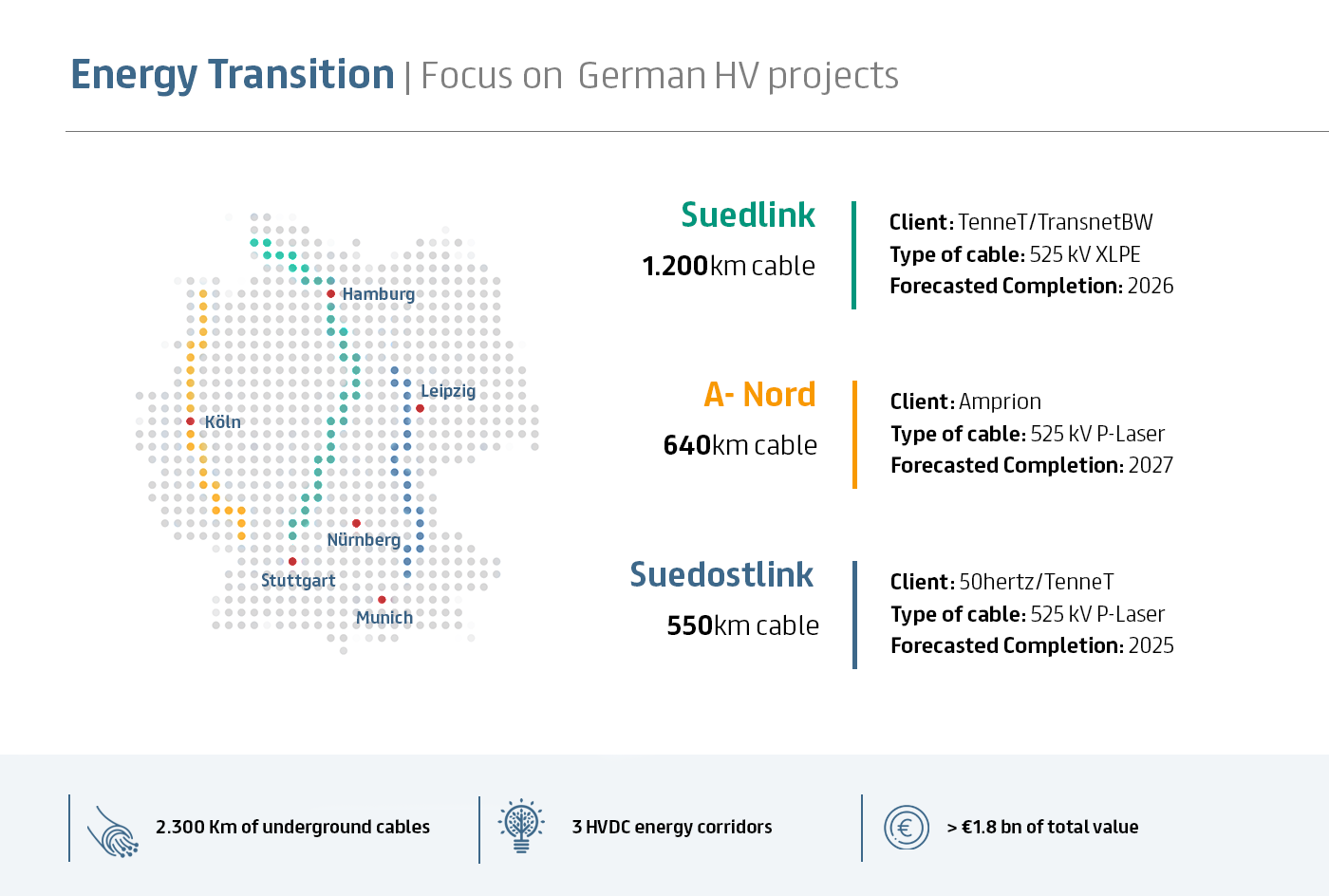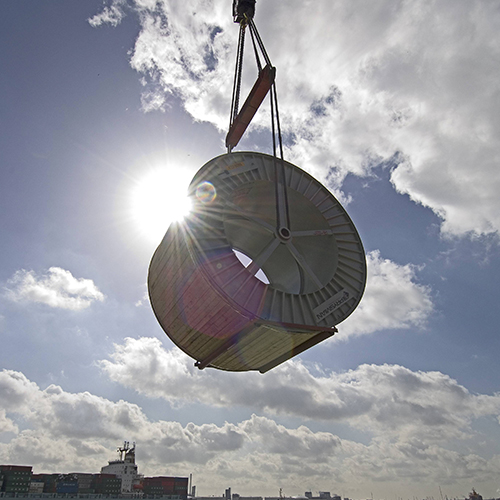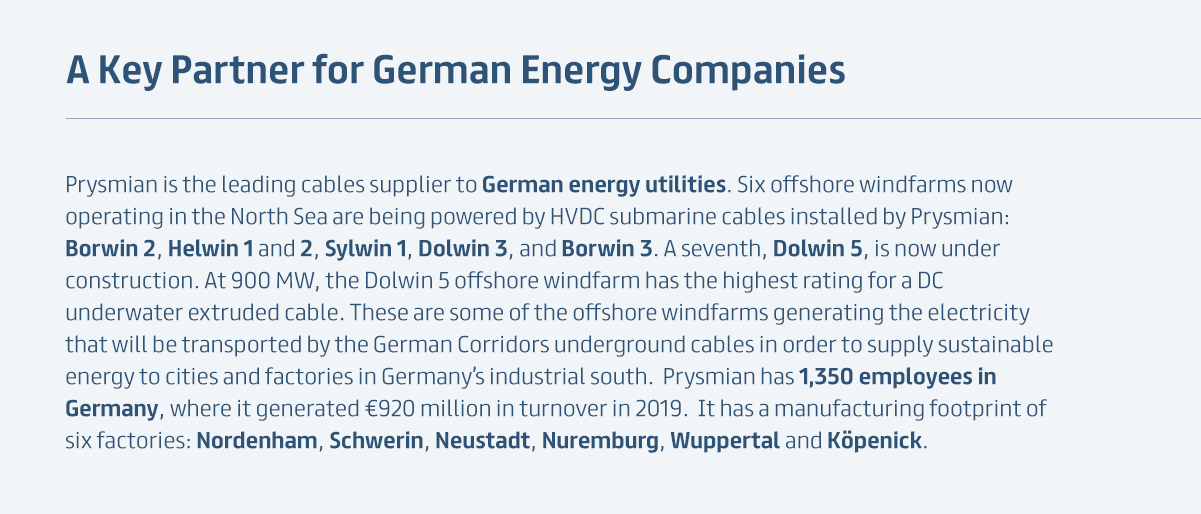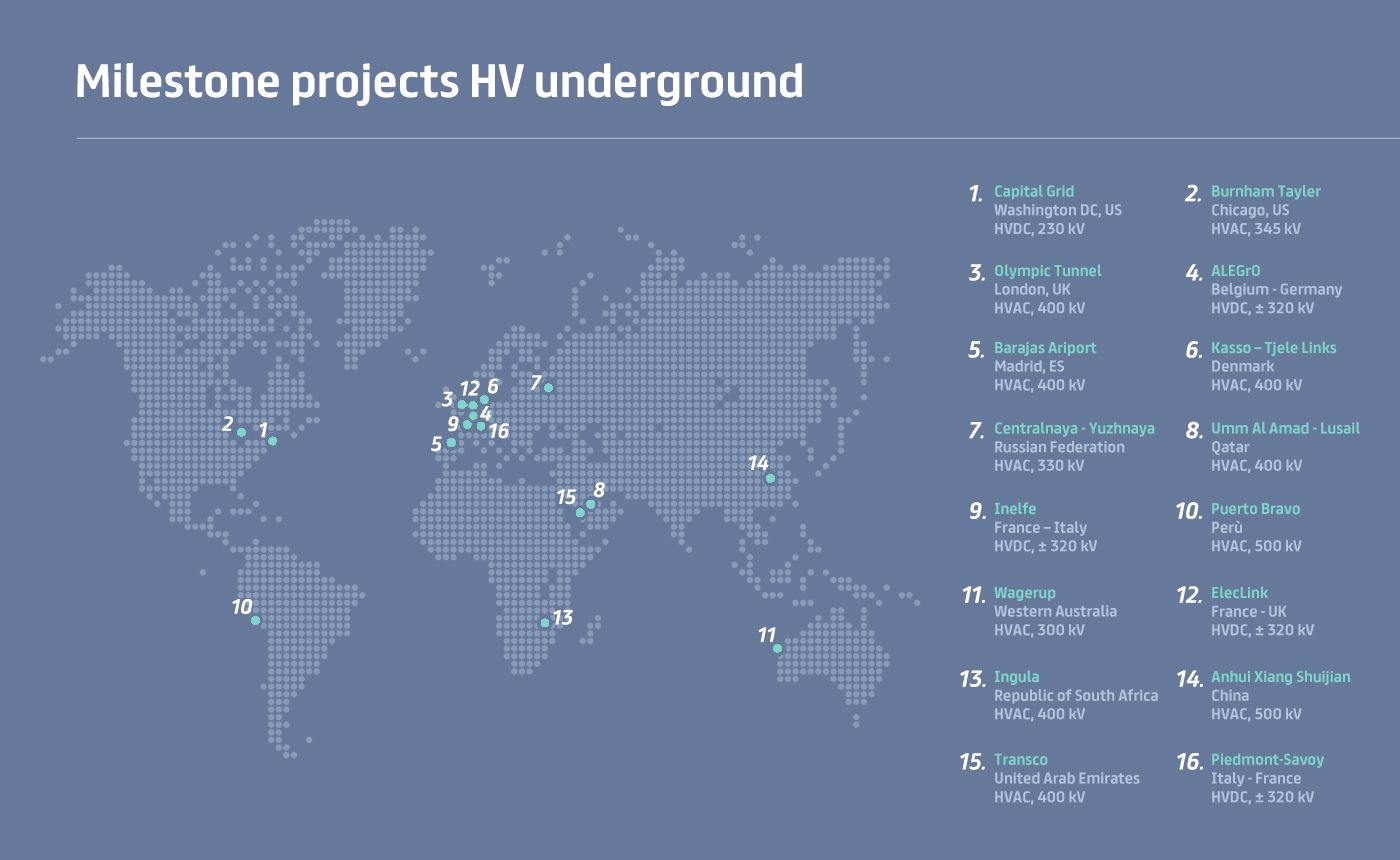By 2022, Germany will phase out its 17 nuclear power plants, making it even more challenging to achieve its “Energiewende” plan to shift Europe’s industrial powerhouse over to a fossil fuel-free economy by 2050. Despite Germany’s massive investment in renewable energy, the country now faces a major hurdle in achieving its decarbonization goal because its electricity grid is not up to the task of efficiently transporting wind energy generated in the north to where it is needed in the southern regions.
“As the number of windfarms continues to grow, we will see an increasing need for cables to export and dispatch renewable energy attached to wind farms,” said Borjan Sehovac, High Voltage Business Unit Vice President. Germany’s plan for three major HVDC interconnectors has required Prysmian Group - and other industry players - to develop new solutions like 525 kV underground land cable technology. This higher-voltage cables normally leads to a reduced quantity of cables to transmit the same power (comparing for example 525 kV to a 320 kV DC system), thus requiring less space to install the system, increasing also the overall benefit and efficiency for a project of this size. Prysmian has launched two new 525 kV cables, one qualified with P-Laser and one with XLPE insulation. P-Laser is the first fully recyclable eco-friendly high-performance cable. Awards for the German HVDC Corridor projects are expected in summer 2020.









